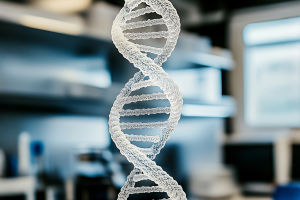Bacterial Biofilms!
Bacterial biofilms represent a sophisticated survival strategy that profoundly complicates the treatment of chronic infections.
These structured microbial communities, encased within a self-produced extracellular polymeric matrix, create a protective niche that shields bacteria from antibiotics and host immune defenses.
Biofilm Formation: A Dynamic and Protective Process
Biofilm development occurs in distinct phases: initial attachment, growth and maturation, and eventual dispersal. During the attachment phase, bacteria use surface appendages such as pili and fimbriae to adhere to host tissues or medical devices. This is followed by the production of an extracellular polymeric substance (EPS) matrix that cements the community together, enabling the biofilm to resist environmental stresses and antimicrobial agents.
Mechanisms Underpinning Biofilm-Associated Chronicity and Resistance
Biofilms confer remarkable tolerance to antibiotics and immune clearance through multiple mechanisms:
Physical Barrier: The EPS matrix restricts of antimicrobial agents and immune cells, effectively hiding bacterial cells within
Altered Metabolism: Cells within biofilms often exhibit slow growth or enter dormant states, reducing the efficacy of antibiotics that target actively dividing bacteria
Quorum Sensing and Communication: Bacteria coordinate gene expression through chemical signaling (quorum sensing), regulating biofilm maturation and resistance traits
Genetic Exchange: Biofilms facilitate horizontal gene transfer, accelerating the spread of antibiotic resistance genes among bacterial populations
Immune Evasion: Biofilms impair phagocytosis and modulate host immune responses, enabling bacteria to persist despite immune activation
Dr. Olivier Neyrolles, an expert in bacterial pathogenicity, emphasizes that "the bacterial cell envelope and biofilm matrix are central to immune evasion and infection persistence, making biofilms a formidable barrier to treatment".
Clinical Implications: Biofilms as Drivers of Refractory Infections
Chronic infections involving biofilms are notoriously difficult to eradicate and often require prolonged or repeated antibiotic courses. Conditions such as cystic fibrosis lung infections, chronic wounds, prosthetic joint infections, and infective endocarditis are heavily influenced by biofilm formation. For instance, Pseudomonas aeruginosa biofilms in cystic fibrosis patients contribute to progressive lung damage and reduced life expectancy.
The persistence of biofilms on medical devices poses a significant healthcare challenge. Bacteria such as Staphylococcus aureus exploit host proteins like fibrinogen to anchor themselves to catheter surfaces, initiating biofilm formation that can lead to bloodstream infections.
Emerging Therapeutic Strategies Targeting Biofilms
Traditional antibiotic therapies often fail against biofilm-associated bacteria, prompting the development of innovative approaches:
Nanotechnology-Based Therapies: Nanoparticles can deliver antimicrobial agents more effectively
Phage Therapy: Bacteriophages specifically target bacteria within biofilms, disrupting their structure and killing embedded cells
Quorum Sensing Inhibitors: These agents block bacterial communication pathways essential for biofilm maintenance
Immune Modulation and Cell Hijacking: Novel strategies aim to enhance host immune responses or redirect immune cells to target biofilm
Combination Drug Therapies: Using synergistic drug combinations to overcome resistance mechanisms within biofilms
Bacterial biofilms play a pivotal role in the pathogenesis and persistence of chronic infections by providing bacteria with a protective environment that resists antibiotics and immune clearance. The complexity of biofilm biology demands multifaceted therapeutic strategies that go beyond conventional antibiotics.
Advances in nanotechnology, phage therapy, and quorum sensing inhibition offer promising avenues to dismantle biofilms and improve patient outcomes. Continued research and clinical innovation are essential to combat the enduring challenge posed by biofilm-associated infections.
-
 Sleep Cycles & MemoryCan Sleep Secrets Really Boost Brain Power?! See What Happens in Just One Night!
Sleep Cycles & MemoryCan Sleep Secrets Really Boost Brain Power?! See What Happens in Just One Night! -
 Baldness in Your DNA?Could your DNA be the reason for hair loss? See how genetics shape your hair future!
Baldness in Your DNA?Could your DNA be the reason for hair loss? See how genetics shape your hair future! -
 Atherosclerosis Alerts!Understanding Atherosclerosis?! What's Clogging Arteries—And Can You Stop It In Time?!
Atherosclerosis Alerts!Understanding Atherosclerosis?! What's Clogging Arteries—And Can You Stop It In Time?!
Copyright © zogu 2021 - 2025. All Right Reserved.